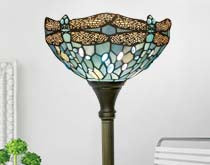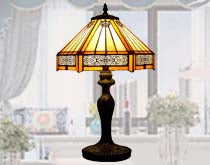What is Ambient Light? What do You Know?
Ambient light refers to the light that is prevalent in a specific environment. It does not come from a specific light source but is the sum of light reflected and scattered by various surfaces. Light affects human health by controlling the body's circadian rhythm, reducing depression, and improving sleep quality. Ambient light affects mood and happiness.
In nature, ambient light can come from the scattering of sunlight through the atmosphere, or from the weak illumination of moonlight and starlight; in artificial environments, ambient light is usually a soft light created by indirect lighting devices such as ceiling lights and wall lights. This article will explore the role of ambient light and its types, so we can choose the right light for our specific space!
What is Ambient Light?

Ambient light refers to basic lighting that is evenly distributed throughout the space. This light source is usually indirect, coming from reflected or diffused light, rather than directly from a bulb or other light source.
The main function of ambient light is to provide uniform, soft lighting, reduce shadows and strong contrasts, and make the entire environment look more natural and comfortable. Ambient light is important in various designs and photography because it helps create a balanced and comfortable visual effect.
Importance of Ambient Light
Ambient light affects our mood, well-being, and interior design aesthetics. Proper ambient light has a positive impact on mental health, and studies have shown that exposure to bright light can reduce depression and improve overall health. For example, nurses who are exposed to at least three hours of daylight a day experience less stress and higher job satisfaction, while workplaces that lack natural light are more likely to cause physiological, sleep, and depression issues.
In interior design, ambient light is used to create comfortable and pleasant spaces. Proper lighting not only enhances the beauty of a room but also highlights architectural features and improves functionality. Designers often combine natural and artificial light to achieve the desired effect, creating a harmonious environment by balancing brightness and shadows within the space.
What are the Ambient Light Sources?
Natural Sources
Sunlight is the most important natural source of ambient light, providing overall illumination during the day. Sunlight not only enhances visibility but also creates a sense of openness in the space. Exposure to sunlight can improve mood and well-being. Sunlight also helps regulate the body's circadian rhythm and improve sleep quality.
Moonlight and starlight provide soft lighting at night, creating a calm and peaceful atmosphere. These natural sources provide enough light to navigate an outdoor space without artificial lighting. Moonlight and starlight not only contribute to the overall mood of an environment but also enhance its beauty.
Artificial Sources
Artificial ambient light sources include general lighting fixtures and decorative lighting. General lighting fixtures, such as ceiling lights, recessed lights, and wall lights, evenly distribute light to provide a broad and consistent glow that is both practical and decorative.
Decorative lighting fixtures, such as chandeliers, decorative pendant lights, and aesthetic Tiffany floor lamps, not only provide ambient light but also attract the eye and enhance the ambiance of a room. Chandeliers add elegance and sophistication, decorative pendant lights provide targeted lighting, and aesthetic floor lamps provide the flexibility to adjust the lighting effect for different activities.
Effects of Ambient Light

Circadian Rhythm
The body's biological clock relies on light signals to maintain a 24-hour cycle. Exposure to natural ambient light during the day helps synchronize this cycle. Properly aligning the circadian rhythm can improve sleep quality and overall health. Interrupted light exposure can lead to sleep disorders and other health problems. Continuous exposure to ambient light at the right times supports a healthy circadian rhythm.
Mental Health
Ambient light has a significant impact on mental health, and bright light can reduce symptoms of depression. Studies have shown that adequate lighting in the workplace can reduce employees' stress levels.
Natural light can improve mood and enhance cognitive function. Lack of appropriate ambient light can lead to increased symptoms of anxiety and depression. Incorporating adequate ambient light into daily settings can promote mental health.
Living Spaces
Ambient light transforms living spaces. Proper lighting creates a welcoming atmosphere in a home. Natural light enhances the aesthetics of living areas. Artificial ambient light provides consistent lighting throughout the day. Homeowners use a combination of the two to achieve a balanced environment. Effective ambient lighting improves the functionality of living spaces.
Commercial Spaces
Commercial spaces benefit greatly from ambient light. Proper lighting increases productivity in the workplace. Bright, even lighting reduces eye strain for employees. Retail stores use ambient light to create an inviting shopping experience.
Restaurants rely on ambient lighting to create an ideal atmosphere for diners. Effectively managing ambient light in commercial spaces can improve overall performance and customer satisfaction.
How to Effectively Manage Ambient Light?

Managing ambient light at home requires a multi-layered approach to lighting. First, blend natural light with artificial lighting. Maximize the use of natural light through skylights or large windows, while increasing indoor light sources with ceiling, floor, and wall lamps.
It is recommended to use warm-colored bulbs to create a comfortable atmosphere, effectively adjust the lighting intensity, and enhance light spread through dimmer switches and reflective surfaces such as mirrors. Avoid using only a single light source and bulbs that are too bright or too dim to avoid glare or shadows.
Ambient light in the work area should support efficient work. It is recommended to use uniform overhead lighting combined with task lighting, such as task lamps, to reduce eye fatigue. Desks should be close to windows to take advantage of natural light, while glare can be controlled through blinds or shades.
Ensure that screen positioning and lighting configurations minimize glare and maintain consistent lighting levels to avoid light fluctuations. Take regular breaks, follow the 20-20-20 rule to relieve eye strain, and make sure your work area is tidy and well-lit.
Historical and Cultural Significance
Candles were once the main source of lighting in the Middle Ages, making portable and controllable lighting possible, and monasteries and castles used chandeliers and candlesticks to enhance ambient light. In the 18th century, the widespread use of gas lamps improved safety and extended social activities into the night, gradually replacing candles and oil lamps.
The invention of the modern oil lamp and Thomas Edison's light bulb revolutionized lighting, and the advent of the light bulb gave rise to a variety of lamps such as chandeliers, wall lamps, table lamps, and floor lamps.
Technological advances continue to drive the development of lighting solutions. The introduction of LED technology has brought energy-saving options and provided customizable brightness and color temperature. In addition, smart lighting systems have made remote control and automation possible, and homeowners can easily adjust lighting settings through smartphones or voice commands.
In addition, the Tiffany lamp is a classic decorative lighting, designed by Louis Comfort Tiffany in the late 19th century. Its intricate stained glass patterns and unique design make each lamp a work of art, adding elegance and sophistication to the space. These lamps are loved by collectors and enthusiasts.
Summary
Ambient light plays an important role in improving daily life. Proper management of ambient light can transform a space, improving functionality and aesthetics. Effective ambient lighting creates a warm atmosphere, reduces eyestrain, and improves mood.
Maximizing natural light reduces reliance on artificial light sources and promotes a sense of well-being. Pay attention to ambient light in your daily environment to improve comfort and productivity. Prioritize ambient lighting to create warm, harmonious spaces.
The Werfactory website provides many types of Tiffany lamps, whether it is from the room to the kitchen, or the wall lamp in the corridor, it provides you with a unique style. As the most collectible and very soft lamp, the Tiffany lamp can add a warm and harmonious atmosphere to your space.



























